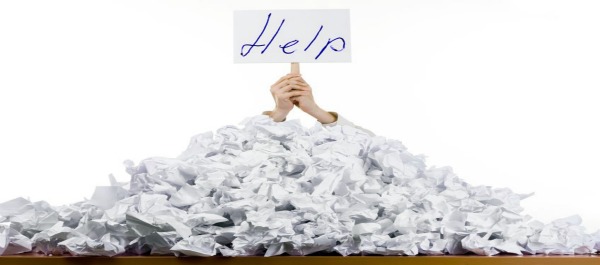
14 Jun Learning to See Office Waste
Lean is the constant pursuit of identifying and eliminating waste and there are many different tools that Lean practitioners use to accomplish this goal, but they all align with the one guiding principle of identifying and eliminating waste. We will discuss many types of waste in upcoming posts, but we should lay some ground rules and agree on some basic principles before going too deep.
First, let’s agree on how to define waste. I will give you the accepted definition, but your input would make this a much richer exploration, so please respond by adding to my definition or challenging it as you see fit. Primarily, waste is the opposite of value. Of course, this leads to the question of what is value. Since value may be a little simpler to get our minds around, let’s first define it as a product or service that a customer is willing to pay for (and is done right the first time). Ultimately, this means that waste is any activity that is part of a creating a product or performing a service that a customer would not be willing to pay for - IF they knew about that waste, that is.
Next, we should discuss waste elimination as a philosophy. I contend that total waste elimination is a lofty goal that can never fully be achieved and is somewhat nebulous and idealistic. It may even be irrelevant. However, we should never accept waste that we see and we should be in a constant battle to eliminate it.
Finally, the relationship between work and waste should be highlighted. Virtually all waste is work, but the opposite is certainly not true. Just because we classify an activity as something that the customer is unwilling to pay for doesn’t mean that it isn’t work. In fact, the very reason we strive to eliminate it is because work is required to perform the activity, but isn’t rewarded by the customer. We must always be mindful of this and be careful how we present our findings as we search for waste. People often take offense when an activity that they exert great amounts of energy to complete, is classified as wasteful. An employee who takes pride in his work will often feel stressed, angry or hurt at such an assessment. Handling these situations with empathy and coaching can make the difference in whether or not someone is willing to help us eliminate wasteful activities or not. After all, they are more than likely tired at the end of their work day, even if the customer is unwilling to pay for their activities. Being sensitive to this and helping employees understand how to eliminate waste without disrespecting their effort will help get everyone on board with our waste elimination efforts and maintain a healthy sense of respect.
This post will be followed many more over the next few months which will deep-dive into different forms of waste in the office as well as suggestions on how to remove them. Each post is meant to teach you how to see that particular form of waste. We would love to hear examples for each from your environment one as well as what you did about it.

Vipin
8/18/2017 11:13:55 AMgrate
Snurnebuh
4/5/2021 3:51:07 PMhttps://vsviagrav.com/ - online pharmacy